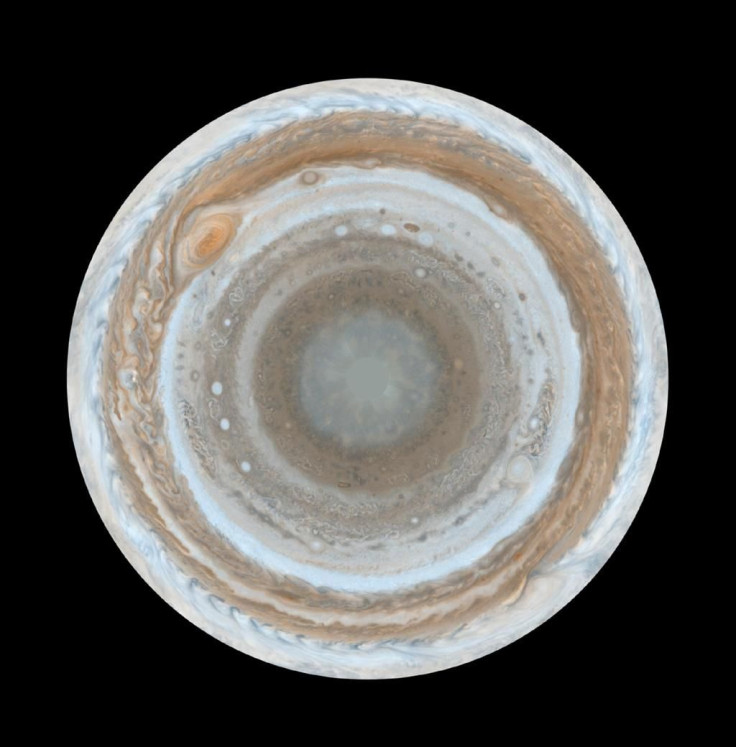Saturn Mission: Cassini's Achievements As Countdown To Grand Finale Begins

The countdown to the final month of NASA’s Cassini spacecraft began after the orbiter sailed through the outermost reaches of Saturn’s atmosphere without trouble Monday.
According to NASA, this was the first of the five dives which will be a part of the "Grand Finale" for the 20-year mission that will end on Sept. 15 as the spacecraft dives to its demise and burns up like a meteor.
"As it makes these five dips into Saturn, followed by its final plunge, Cassini will become the first Saturn atmospheric probe," Linda Spilker, Cassini project scientist at NASA's Jet Propulsion Laboratory in California, said in a press release.
On that note, let’s see how the journey has been so far:
2.2 billion-mile interplanetary journey:
Cassini has explored Saturn and its moons for more than 13 years, after being launched Oct. 15, 1997, and entering the orbit around Saturn on June 30, 2004, after a 2.2 billion-mile interplanetary journey.
During its nearly seven-year journey to Saturn, Cassini had an opportunity to perform flybys of Earth, Venus, and Jupiter. During its flyby of Jupiter, it produced the most detailed true color photos of the gas giant ever recorded.

Hundreds of flybys:
Since its arrival, it has circled Saturn almost 300 times and observed 49 of Saturn’s 62 known moons with close and long-range flybys. Of these flybys, most have been made close to Titan, around 127.
Landing Huygens probe on Titan’s surface:
On Dec. 25, 2004, Cassini dropped off the European Space Agency's Huygens probe on its 22-day journey to the surface of Titan. On landing, it discovered the world similar to the early days of Earth before life evolved. Lakes, drainage channels, rainstorms, all appear to constantly impact Titan's surface, the only difference being much of the liquid is composed of methane and ethane. The surface temperature recorded by Huygens of the moon was -290.83 °F.
Discovery of unknown moons:
During its orbit, Cassini picked out seven previously unknown moons in orbit within the planet's rings. These include Methone, Pallene, Polydeuces, Daphnis, Anthe, and Aegaeon. The seventh moon, discovered in 2009, is presently named S/2009 S 1 and is only 984 feet in diameter.
Subterranean habitable zone of Enceladus
Another interesting find was the subterranean ocean on the icy moon of Enceladus, roughly 310 miles in diameter, which scientists believe may be hiding life.
"It has liquid water, organic carbon, nitrogen [in the form of ammonia], and an energy source," Chris McKay, an astrobiologist at NASA's Ames Research Center in Moffett Field, California, told Daily Galaxy. "Besides Earth, there is no other environment in the solar system where we can make all those claims."
Saturn’s giant Hurricane:
In 2006, scientists were baffled by an image sent by Cassini which seemed to be a massive hurricane churning away at its north pole. It was remarkable as the weather phenomenon had never been observed on another planet other than earth before.
Not only was the hurricane 50 times the average size of a hurricane on Earth, it had wind speed four times as fast. Another interesting fact was it was completely stationary. Scientists were also baffled by how it was formed, without access to large quantities of water vapor.

Findings from the final plunge:
One of the prime goals of Cassini’s final months is to reveal new data about the gas planet, its atmosphere and clouds, the materials making up its rings, and the mysterious gravity and magnetic fields of the planet.
The final phase of Cassini’s mission has already produced one surprising discovery: the space between Saturn and its rings is emptier than scientists expected. In the first of its five dives, the probe detected fewer impacts of tiny dust particles than predicted.
All this information would help scientists formulate concepts for a future dedicated probe to descend into Saturn’s atmosphere to measure winds, density, and composition deep below the planet’s cloud tops.
"It's long been a goal in planetary exploration to send a dedicated probe into the atmosphere of Saturn, and we're laying the groundwork for future exploration with this first foray," Spilker said.
© Copyright IBTimes 2024. All rights reserved.




















